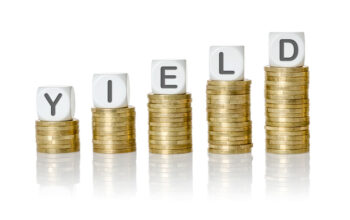 Today we will explore a different vehicle for income, one which might not be familiar to you. First, some context. When you speak of a mutual fund, it is usually what is known as an Open End fund. It is open in the sense that new investors can buy shares at whatever the composite value per share at the end of each day of trading. Likewise, the fund redeems shares at that same price whenever an investor wants to sell.
Today we will explore a different vehicle for income, one which might not be familiar to you. First, some context. When you speak of a mutual fund, it is usually what is known as an Open End fund. It is open in the sense that new investors can buy shares at whatever the composite value per share at the end of each day of trading. Likewise, the fund redeems shares at that same price whenever an investor wants to sell.
A Closed End fund is one in which an investment company issues a fixed number of shares in an initial public offering. Like a stock, each share trades at a price determined by supply and demand all day every trading day. Mr. Market determines the value on an ongoing basis. Usually shares trade at a discount of about 8 percent from its actual composite value.
We are now dreadfully short of attractive old reliable income payers like government bonds. As of May 15, you could lend your money to Uncle Sam for 30 years at 1.33 percent. If that is too long a period, you can get at .64 percent per year for 10 years. Such a deal! (Source: Federal Reserve Bank of NY).
In comparison, closed end funds can contain investments of different kinds—both bonds (debt) or stocks (equity). For example, in January 2009 in the midst of the so-called Great Recession, I was turning over every rock to find healthy promising investments. I happened to find a closed end bond fund, PIMCO High Income, (PHK) as a possibility.
Back then, Bill Gross was still the world’s bond king. He managed billions and billions of bonds for PIMCO. The name, High Income, means junk in laymen’s terms. But looking inside, I found that Gross had sold low quality bonds and replaced them with US government bonds and those of big banks like Bank of America. Since the government had promised to support them, even bank bonds were definitely not junk anymore.
Because the price per share of PHK had fallen from $16.39 on June 1, 2007, to a low of $2.88 by mid-November, 2008, the distribution of monthly dividends had skyrocketed as a percentage yield. I bought our shares at $6.74 in mid-January, 2009, giving clients a yield exceeding 22 percent. (Caveat: the yield was also higher because the fund borrows money to purchase more bonds. This is called leverage.)
When investors throw up their hands and sell everything indiscriminately, most investments sink to bargain basement prices. There are usually diamonds in among the gravel they toss out. By the way, not only did we continue to receive the 12 plus cents per share for months, but we sold at a 100 plus percent profit within three years because fear subsided and prices returned to more normal levels.
What is available now? PHK still trades although we do not currently hold any shares. On December 31, 2019, it closed at $7.51. At $5.20 per share (Friday, May 22 close), it is distributing 74 cents per year at present, over 14 percent. Its lowest price this cycle has been $3.55, but now is still about 35 percent below its 52 week high of $8.12. Similar situation to 2008-09. Instead of a discount, Morningstar reports it is selling at a premium of 11 percent and that it contains 11 stocks and 451 different bonds.
I am not recommending PHK or even the category. But you should know that several hundred of them exist at various risk levels. They are not guaranteed, but the income can be great. But based upon centuries of historical economics, I am not well convinced Uncle Sam is a good credit for another 30 years either.
